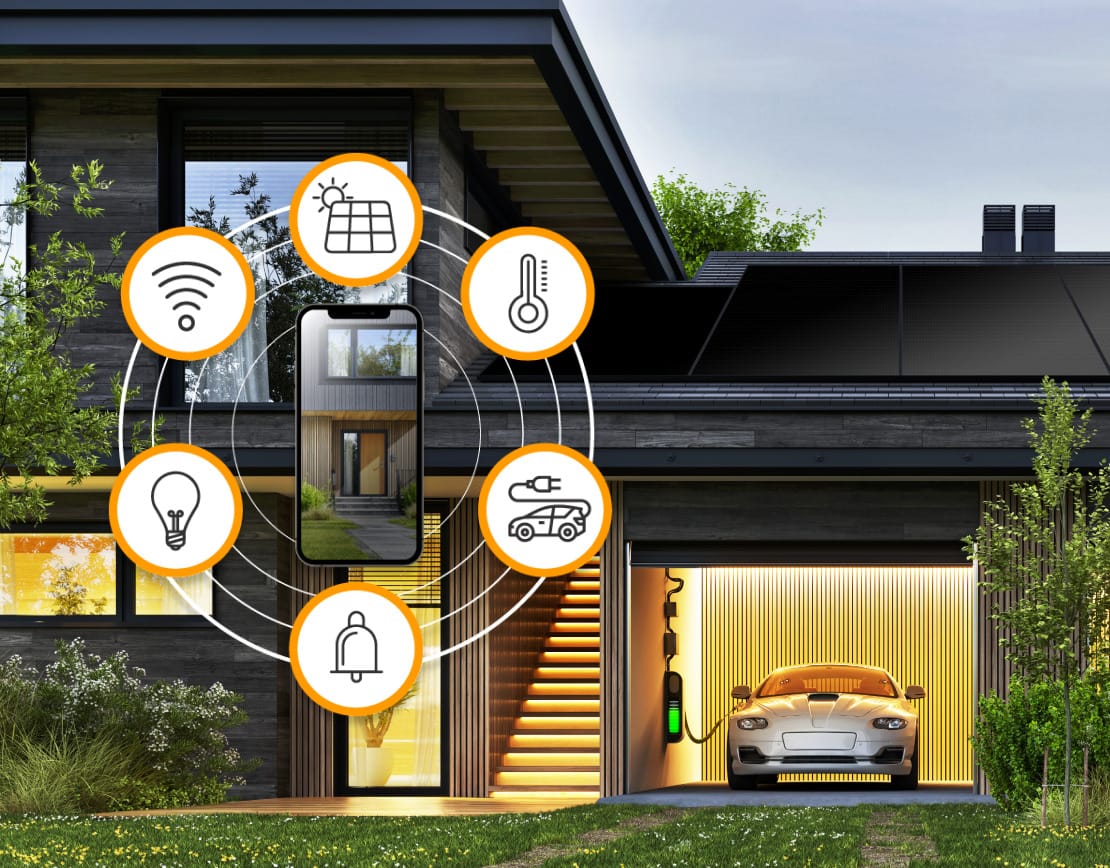Battery storage is often mentioned as a critical component of electrification, but we should discuss why that is and how including a battery storage solution in your electrification project can save you money. As we move into a new year defined by PG&E bill increases and increasing electricity costs, the case for electrification becomes stronger by the day. It is an inarguable fact that as of January 1st, the cost of your energy bill increased, with no material benefit to you the customer.
On top of that, the utility is planning a second and potentially third rate increase for the first half of this year alone, meaning your already high bill is going up. In the current market, you need to be smart in how you navigate your home finances. Today, we’re going to discuss battery storage, and how it enables your entire electrification project to function at a greater level of efficiency while also supercharging your savings potential.
What is Battery Storage?
Onsite solar battery storage involves the installation of batteries as part of a residential solar system. The batteries allow you to store generated solar energy on site, to be used when needed at a later date. This usually involves powering electrical appliances at night or during peak energy pricing hours.
How does Battery Storage Work?
When incorporated into your solar installation, battery storage serves to collect and store any excess energy generated during the day. Without a battery storage solution, your excess solar energy would instead flow back into the grid, and with a net metering agreement the utility would then give you a credit for the energy exported to the electric grid. However, with a battery storage system, you have much more control over what happens to the power you generated, and you can leverage that power strategically to save yourself even more money.
One way of doing this is by storing generated energy during the day when the cost of energy is low, and then utilizing that energy in the evening and night once the cost of energy goes up. Traditionally, you’d have to pay market rate for power when you use it, and given that price goes up in the evenings and after the sun goes down, it costs more to power your home at the end of the day. If you had net metering but no battery, you’d only be able to send power to the grid when you generate it, and you’d be on the hook for those high prices in the evenings when you need power. With a battery, you can either cover your own energy usage in the night, saving money on high energy prices, or you can export that stored energy to the grid at a premium, covering the installation costs and ultimately making you money.
Self-Consumption vs. Backup Batteries
When discussing solar battery systems, it's important to differentiate between their applications, and their intended use cases. In the solar industry, we mainly focus on battery systems that emphasize self-consumption, backup power, and those designed for both functions. Choosing between these types of batteries depends on your personal needs and priorities, whether that involves reducing electricity bills, ensuring power during outages, or both. The technology behind solar batteries continues to evolve, offering increasingly efficient and flexible solutions for different energy needs.
Self-Consumption
The purpose of self-consumption batteries is primarily to maximize the use of solar energy produced by a solar panel system within your home, reducing reliance on the grid. These batteries store any excess solar power generated during the day for use during either the evenings or when solar production is low, ensuring that the majority of your generated solar power is consumed directly. These self-consumption systems are optimized for daily cycling, which allows you to lower your electricity bills by using stored solar energy instead of purchasing power from the grid.
A system like this is perfect for someone who is interested in getting the most out of their generated energy and enhancing their energy independence, while keeping in mind that their system won’t necessarily provide emergency backup during outages.
Backup Batteries
With a backup battery system, the primary goal is to provide power during grid outages, ensuring that your essential circuits remain operational. This kind of system may not be used on a daily basis; rather, it would be designed to keep and maintain a charge which could be supplied to your home instantly should the power grid fail. A system such as this would typically be designed with a higher capacity and power output to support critical loads such as refrigerators, lights, and medical equipment during an outage. While these systems can store solar or grid energy, the primary design is for ensuring reliable power access during an outage, not to optimize your daily usage.
Hybrid Systems
If you are interested in a system that is able to optimize your daily energy usage while also providing you with a safe fallback to cover power outages, a self-consumption/backup system is possible. Such a system would be designed to offer the benefits of both self-consumption and backup power, providing cost savings by utilizing solar energy efficiently and offering reliability during power outages. In order to achieve this, a hybrid system like this would be outfitted with smart technology to manage energy use dynamically, deciding when to store energy, when to use it for self-consumption, and when to reserve power for backup needs.
These dual-utility systems might come with a higher upfront cost due to their advanced technology and greater capacity to serve both purposes effectively, but they would be capable of impressive functionality, optimizing battery use according to solar production, electricity rates, and the likelihood of power outages. This would provide both strong economic benefits and reliable energy security and outage resiliency.
Level Up Electrification with Battery Storage
As we’ve previously discussed, electrification projects involve a two stage saving strategy. You first save on the efficiency of modern electric appliances, which use less energy to operate overall. Older appliances are just less energy efficient overall, so upgrading to current equipment is going to net you an energy savings right off the bat. Then, you save a second time once you start to operate your energy efficient appliances with clean, renewable solar energy. That multistage savings strategy works on its own, but it’s made even stronger with battery storage.
Because battery storage allows you to save and use power when you want to, you can maximize the efficiency of your electrification project by using generated power whenever possible. Especially if you’re planning to leverage something like an EV Charger or a heat pump, it pays to operate those high energy items when you have power saved up. That way, you’re not paying a premium to charge your car or warm your home.The goal of these electrification projects is to create an elevated home, one where you have efficiency of energy usage and control over how your system helps you save money. Battery storage unlocks so much potential in your solar enabled electrification project.
Solar + Storage is the Solution
No electrification project is complete without at least considering the inclusion of solar + storage. They pair so nicely with the goals and results of electrification that it just doesn’t make sense to try and achieve one without the other. Solar generation and battery storage enable your energy independence and savings every step of the way, and with the present and future price hikes looming over utility customers, now is the time to get started and save. As luck would have it, our expert consultants can help you make a plan for an electrification project that utilizes solar and battery storage!



